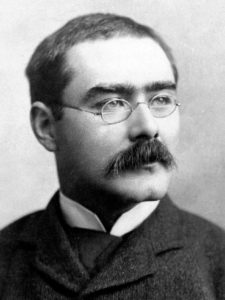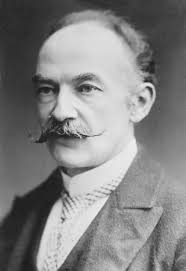We have decided to create the most comprehensive English Summary that will help students with learning and understanding.
Children at Work Summary in English by Gita Wolf
Children at Work Summary in English
Children are made to work and earn in different ways. Some of them help their family make a livelihood. Many run away from unhappy homes and they need to support themselves. They don’t go to any school.
Velu was an eleven year old boy. He ran away from home because his father was addicted to drinking. He used to beat him and his sister and snatched whatever they earned.
The Kanyakumari Express pulled in at Chennai Station. Velu got down and sat on a bench. He had never before seen so many people with their luggage. The noise was terrible. He was feeling tired, miserable and hungry. In his bundle he carried a shirt, a towel and a comb. He had neither money nor ticket. He tried to sleep on the floor near the door. He heard the rough voice of a girl around his own age. The girl was carrying a big bag. She was picking up plastic cups and putting them into the sack. Her name was Jaya. She sat down next to him. She said she could find some food for him to eat. She stood up to go. Velu had nowhere else to go. So he ran after her.
The two got to the road. Smoke and dust made Velu’s head spin. The girl dragged him to the other side of the street. She took him on to a bridge. Velu peeped over the railing. The road under him ran to the city. Velu saw big buildings in the distance. Jaya warned him not to get caught otherwise he would be in jail. His bare feet burned on the hot tar road as he walked.
They finally stopped in frcfnt of a big building. A marriage was going to be performed inside. Behind the hall was a garbage heap. The girl picked up a crushed banana and a vada which Velu ate unwillingly. He felt better. Then the girl went to home to drop her full bag and get another one. Velu also joined her.
Jaya and Velu walked along the roads and came to a bridge across a dirty drain. They came to a row of huts built out of wood, plastic and sheets. It was Jaya’s village. She dumped her sack there and gave him a pair of old shoes, a sack and stick. He wondered what work she wanted him to do. She told him that they were rag pickers. They collected things from rubbish bins-paper, plastic and glass. It was sold to Jaggu, a junk dealer. Velu had no option. He decided to work as a rag picker until he found a better job.
Children at Work Summary in Hindi
बच्चों से पैसा कमाने के लिये कई प्रकार के काम कराये जाते हैं। कुछेक तो अपने परिवार के लिए रोजी-रोटी कमाते हैं। अनेक बच्चे अपने कष्टपूर्ण घरों से भाग निकलते हैं और उन्हें अपना पेट स्वंय भरना पड़ता है। वे किसी स्कूल में नहीं जाते।
वेलू 11 वर्ष का बालक था। वह अपने घर से भाग निकला क्योंकि उसके पिता शराबी थे। वह उससे तथा उसकी बहन से पैसा छीन कर शराब पी जाते थे तथा उन्हें पीटते भी थे।
कन्याकुमारी एक्सप्रेस चेन्नई स्टेशन पर आकर रुकी। वेलू उतर गया और एक बेंच पर बैठ गया। इससे पहले उसने कभी भी इतनी बड़ी संख्या में लोगों को अपने असबाब के साथ नहीं देखा था। शोर भी भयानक था। वह थका, दुःखी और भूखा था। उसकी गठरी में एक कमीज, एक तौलिया तथा एक कंघा था। उसके पास न पैसा था, न ही टिकट। उसने दरवाजे के पास ही फर्श पर सोने की कोशिश की। उसे किसी अपनी ही आयु की लड़की की भारी आवाज सुनाई दी। लड़की के कंधे पर एक बड़ी सी बोरी या थैली थी। वह जूठे प्लास्टिक कप इकट्ठा करके बोरी में रखती जा रही थी। उसका नाम था जया। वह वेलू के पास बैठ गई। वह बोली वह उसके खाने की व्यवस्था कर सकती है। वह जाने के लिये खड़ी हो गई। वेलू के पास भी ठहरने का कोई अन्य ठिकाना न था। इस कारण वह लड़की के पीछे भाग चला।
दोनों ही सड़क पर आ गये। धुऐं और धूल से वेलू का सिर घूमने लगा। लड़की उसे खींचकर सड़क के दूसरी ओर ले गई। वह उसे एक पुल पर ले गयी। वेलू ने रेलिंग के नीचे झाँककर सड़क पर नजर डाली जो शहर की ओर जा रही थी, तथा दूर पर वेलू को विशाल भवन दिखाई दिये। जया ने चेतावनी दी कि कभी पुलिस के हत्थे न चढ़ जाना नहीं तो जेल पहुँच जाओगे। वेलू के नंगे पाँव तपती कोलतार की सड़क पर चलने से जलने लगे थे।
अंत में वे एक बड़े भवन के सामने रुके। वहाँ अन्दर कोई विवाह का आयोजन हो रहा था। हॉल के पीछे एक कूड़ेकचरे का डब्बा रखा था। लड़की ने उस कचरे से एक दबा हुआ केला तथा एक बड़ा उठाकर वेलू को खाने के लिये दे दिया। वेलू ने अनिच्छापूर्वक उन्हें खा लिया। उसने अब बेहतर महसूस किया। लड़की अपने घर की ओर जा रही थी ताकि वहाँ भरा थैला रख दे और एक खाली बोरी ले लें।
जया और वेलू एक गंदे नाले के ऊपर बने पुल पर से गुजरे। वे एक कतार में बने झोंपड़ों के पास पहुँचे जो लकड़ी, प्लास्टिक तथा लोहे की चादरों से बने थे। यही जया का इलाका था। जया ने अपना थैला वहीं रख दिया तथा एक जोड़ी पुराने जूते, एक थैला और एक छड़ी वेलू को भी पकड़ा दिया। वेलू समझ नहीं पा रहा था कि जया उससे क्या काम करवाना चाहती है। जया ने बताया कि वे लोग कचरे में से चीजें निकालने वाले हैं। वे उस कचरे से कागज, प्लास्टिक तथा शीशे की चीजें निकाल कर जग्गू कबाड़ी को बेच देते हैं।
वेलू के पास दूसरा विकल्प न था। उसने भी कचरे से चीजें निकालने का काम स्वीकार कर लिया जब तक कि उसे कोई बेहतर काम नहीं मिल जाता।



